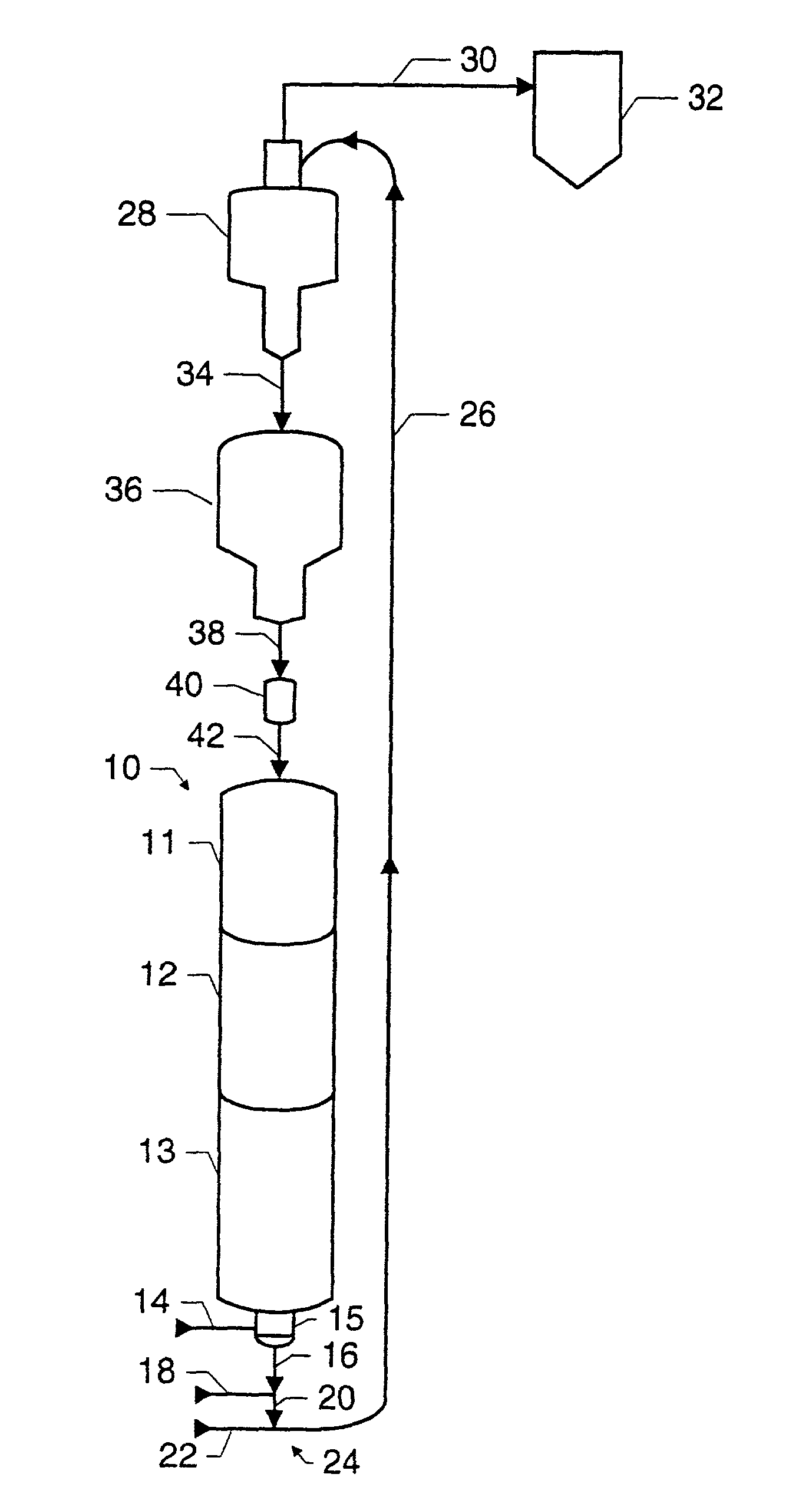Low-temperature regeneration of zeolite L using ozone
a hydrocarbon conversion catalyst and low-temperature technology, applied in the direction of physical/chemical process catalysts, other chemical processes, separation processes, etc., can solve the problems of unneeded carbonaceous, significant worsening of the activity, conversion, selectivity of the zeolite l-containing catalyst, corroding or otherwise, etc., to minimize the environmental risk of accidental release, improve the process of hydrocarbon conversion catalyst regeneration, and minimize the effect of equipment corrosion
- Summary
- Abstract
- Description
- Claims
- Application Information
AI Technical Summary
Benefits of technology
Problems solved by technology
Method used
Image
Examples
example 1
[0079]A sample of the fresh catalyst was treated at the treatment conditions, which additionally comprised contacting the sample with a gas mixture that was formed by mixing air and ozone and which had an ozone concentration of 2 vol-% at a temperature of 100° C. A sample of the treated catalyst was tested at the test conditions in the microreactor. The n-heptane conversion was 44%.
[0080]Comparative Example 1 and Example 1 show that the treatment conditions in Example 1 had only a relatively small effect—only 2 percentage points—on the n-heptane conversion.
example 2
[0082]A sample of the 0.2 wt-% carbon catalyst was treated at the same treatment conditions as in Example 1. A sample of the treated catalyst, which had a carbon content of less than 0.1 wt-% based on the weight of the treated catalyst, was tested at the test conditions in the microreactor. The n-heptane conversion was 24%.
[0083]While Comparative Example 2 shows that the 0.2 wt-% carbon catalyst has become somewhat deactivated, Example 2 shows that ozone regeneration increases the n-heptane conversion by 6 percentage points.
example 3
[0088]A sample of the 2 wt-% carbon catalyst was treated at the same treatment conditions as in Example 1. A sample of the treated catalyst, which had a carbon content of less than 0.1 wt-% based on the weight of the treated catalyst, was tested at the test conditions in the microreactor. The n-heptane conversion was 25.6%.
[0089]Comparative Examples 3 and 4 and Example 3 show that ozone regeneration of the 2 wt-% carbon catalyst increases the n-heptane conversion by 21.9 percentage points, and by 18.4 percentage points over air regeneration.
PUM
| Property | Measurement | Unit |
|---|---|---|
| temperature | aaaaa | aaaaa |
| partial pressure | aaaaa | aaaaa |
| temperature | aaaaa | aaaaa |
Abstract
Description
Claims
Application Information
 Login to View More
Login to View More - R&D
- Intellectual Property
- Life Sciences
- Materials
- Tech Scout
- Unparalleled Data Quality
- Higher Quality Content
- 60% Fewer Hallucinations
Browse by: Latest US Patents, China's latest patents, Technical Efficacy Thesaurus, Application Domain, Technology Topic, Popular Technical Reports.
© 2025 PatSnap. All rights reserved.Legal|Privacy policy|Modern Slavery Act Transparency Statement|Sitemap|About US| Contact US: help@patsnap.com

